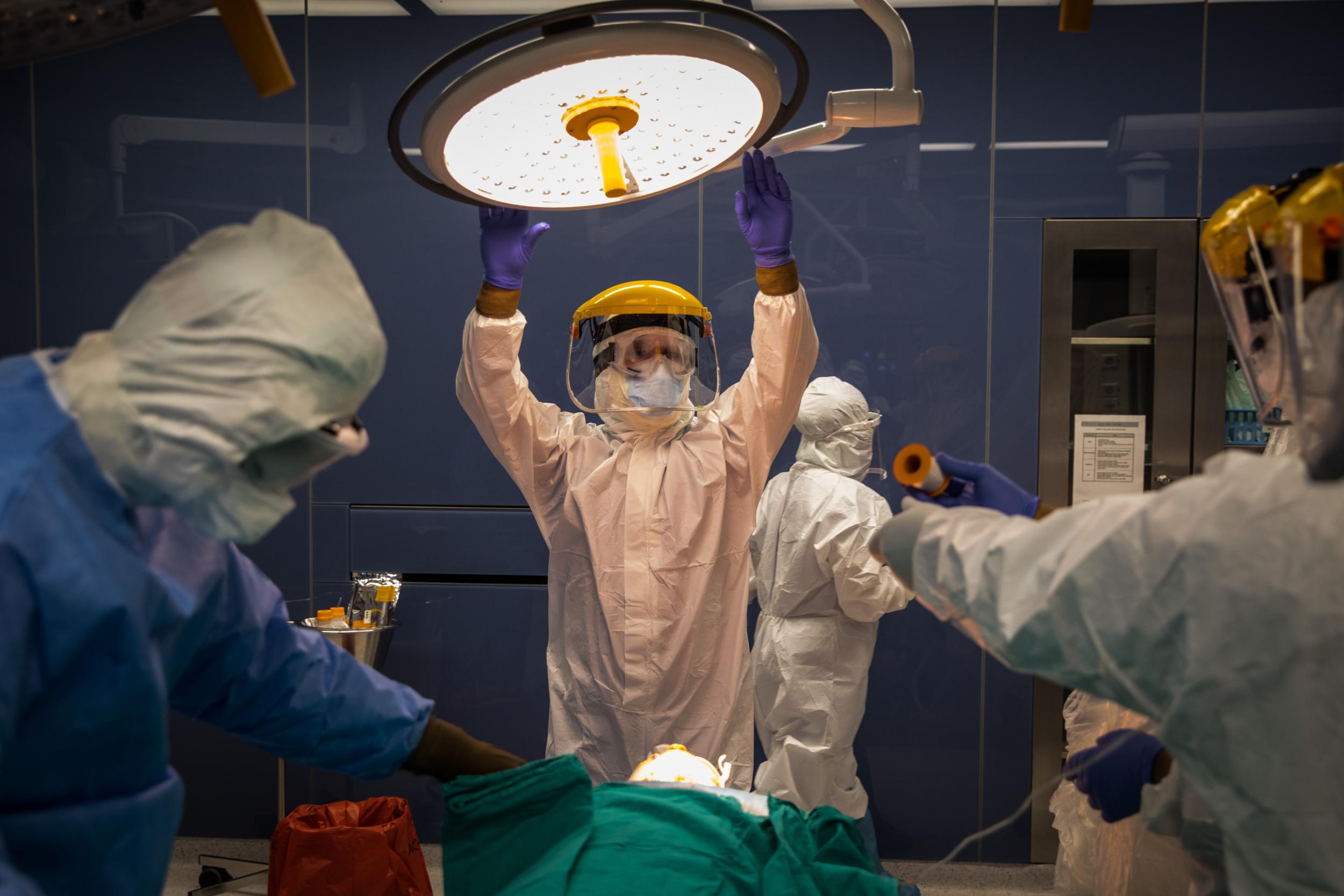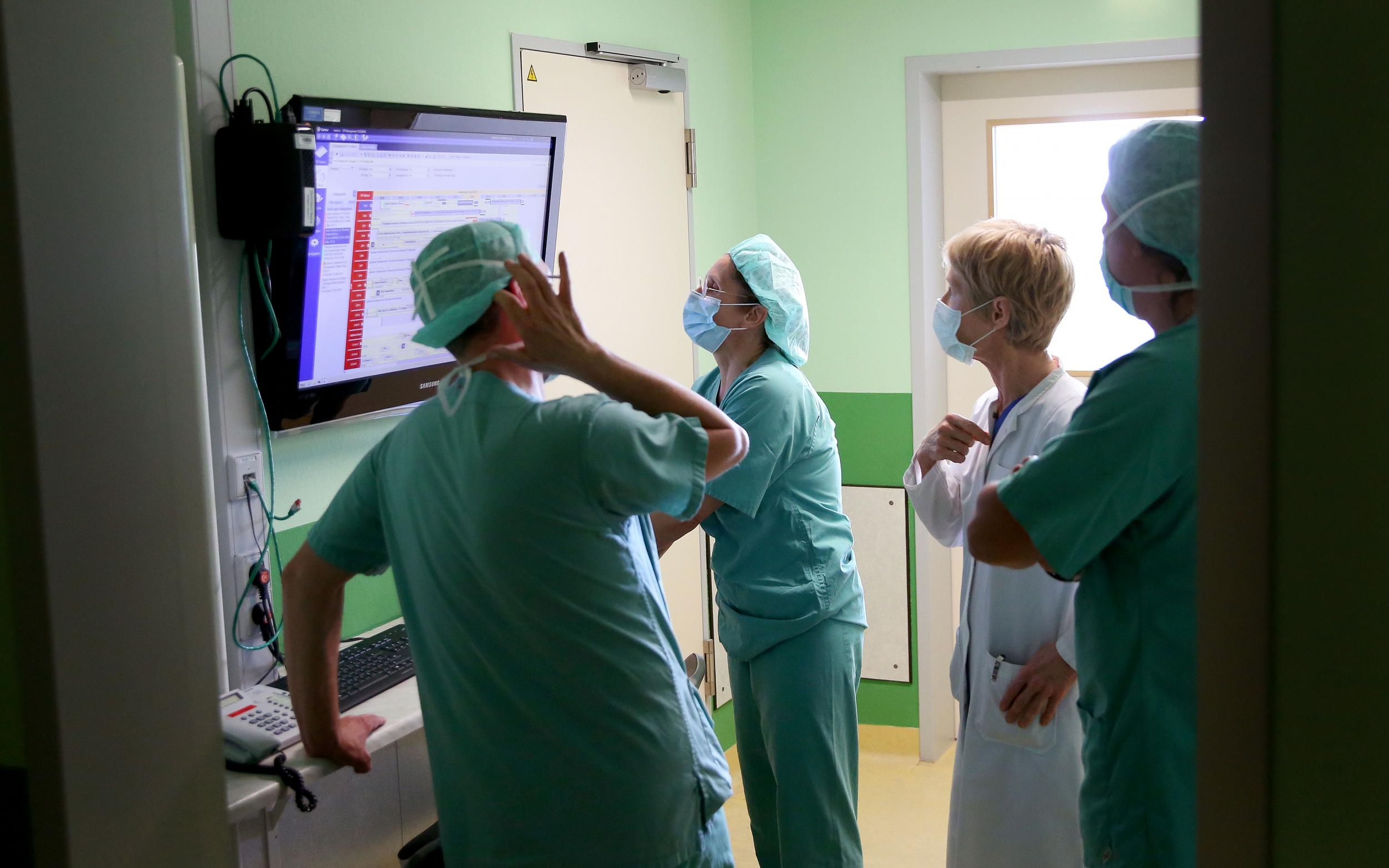Coronavirus: US hospitals poised to restart non-emergency surgeries and procedures
Medical centres with relatively few Covid-19 patients are readying care that has been postponed by a nationwide call to halt such procedures
Your support helps us to tell the story
From reproductive rights to climate change to Big Tech, The Independent is on the ground when the story is developing. Whether it's investigating the financials of Elon Musk's pro-Trump PAC or producing our latest documentary, 'The A Word', which shines a light on the American women fighting for reproductive rights, we know how important it is to parse out the facts from the messaging.
At such a critical moment in US history, we need reporters on the ground. Your donation allows us to keep sending journalists to speak to both sides of the story.
The Independent is trusted by Americans across the entire political spectrum. And unlike many other quality news outlets, we choose not to lock Americans out of our reporting and analysis with paywalls. We believe quality journalism should be available to everyone, paid for by those who can afford it.
Your support makes all the difference.Some hospitals in communities less affected by coronavirus moved cautiously on Monday towards resuming non-emergency surgeries and procedures — a hopeful sign for patients awaiting that care and a medical system badly in need of the revenue those services provide.
Acting on guidance released on Sunday night by federal officials, medical centres with relatively few Covid-19 patients readied some cancer, heart and other care that has been postponed by a nationwide call to halt such procedures.
The federal government issued those voluntary guidelines on 18 March to address the critical shortage of protective gear for front-line health care workers and ensure that hospitals had enough beds for the anticipated surge in Covid-19 patients.
A month later, some hospitals are confident they can handle a resumption of some non-emergency work.
“Now we’re in a very different place,” said Donald Yealy, chairman of the Department of Emergency Medicine at the University of Pittsburgh School of Medicine and the University of Pittsburgh Medical Centre. “We have come to realise that we have plenty of those assets.”
Across the 5,500 beds in the 40-hospital UPMC system Monday, there were just 116 people admitted for Covid-19 disease, the illness caused by the virus. Those patients occupied just 7 per cent of intensive care beds and used 6 per cent of ventilators, Yealy said.
Yet the volume of surgeries performed by the system has declined 70 per cent from its pre-pandemic level.
“We think we’re able to serve what’s really a pent-up demand,” Yealy said. “There’s a lot of necessary care that can be scheduled. There’s even some urgent care that has been put off.”
Hospitals depend on scheduled work such as cancer surgeries, knee replacements and non-urgent heart procedures to bring in money and balance the costly care they must provide to walk-ins and emergency patients. With much of the scheduled work cancelled, they have been losing billions of dollars.
“There is no question it is the apocalypse,” said Charles “Chip” Kahn III, president of the Federation of American Hospitals, the trade group that represents for-profit hospitals and health systems.

Now, medical centres must figure out how to provide these services in a safe environment and reassure patients who have been watching nonstop media coverage of hospitals overrun by the virus. Some people have become so fearful of contracting Covid-19 at emergency rooms that they have stayed home even with chest pain, stroke symptoms and serious infections, according to doctors and early research.
“This is a phased process,” Seema Verma, administrator of the federal Centres for Medicare and Medicaid Services, said on Monday about the guidance on reinstating elective surgeries. She noted the recommendations are intended for communities where the incidence of Covid-19 is low, new cases are relatively sparse, and hospitals have adequate capacity in case of a surge. She emphasised the decision of whether to resume elective work rests with state or local officials.
Considerations about whether a hospital is ready to resume elective surgery include its ability “to address screening and testing for health care providers, as well as for patients”, she said.
Kahn acknowledged that “my members really want to get reopened, but it’s going to be complicated”.
At UPMC, patients preparing to come in will be tested for the virus with nasal swabs two days before arrival, Yealy said, and separated from Covid-19 patients by the greatest distance allowed in each facility.

Similar steps will be taken at Mayo Clinic in Rochester, Minnesota, which is preparing to offer diagnostic procedures such as nerve and muscle conduction tests, endoscopies to diagnose and treat upper gastrointestinal problems and some colonoscopies.
“We are taking every precaution to ensure the safety of our patients, staff and communities while ensuring the proper resources are available to care for all patients, including staff, personal protective equipment, space and supplies,” a spokeswoman said in an email.
At Lee Health in Fort Myers, Florida, planning is underway for “a potential phased release of our restrictions on surgeries and procedures”, said Richard Chazal, director of the health system’s Heart and Vascular Institute.
A spokesperson for Cleveland Clinic said a task force is looking at how to resume surgical cases. “It will be thoughtful, responsible and take place in phases. The safety of patients and caregivers remains our top priority.”
Several medical professional organisations have been working on their own guidelines, focusing on a continuum of risk and benefit rather than an abrupt shift or a strict division between elective and nonelective surgeries.
Thomas Maddox, chair of the American College of Cardiology’s Science and Quality Committee and executive director of the Healthcare Innovation Lab at the Washington University School of Medicine in St. Louis, likened the process to the analysis a doctor would undertake before deciding on surgery for an individual patient.
“I think what we are trying to do is lay out the risk scales, then look at patients, decide where they fit on those risk scales and line them up.”
High-risk patients, he said, should be brought in quickly, even in areas where the prevalence of Covid-19 remains high. Other decisions, he said, will vary by location.
In St. Louis, for example, the virus is less prevalent in the suburbs than downtown, so it makes sense for a medium-risk patient to go to a suburban hospital.
Underlying the success of that process is enhanced testing.
“It’s important that you can test everybody,” said James Howe, a professor of surgery at University of Iowa Carver College of Medicine and president of the Society of Surgical Oncology.
In updated guidelines, the American Dental Association noted that “FDA-approved tests for Covid-19 are not available to dentists in the US. Therefore, dentists should be aware that asymptomatic, healthy-appearing patients cannot be assumed to be Covid-19 free”.
During the pandemic, many doctors noted the transformative nature of telemedicine, which they hope will continue as the threat of Covid 19-recedes. Providers have been able to see many of their patients online, greatly reducing the number of people who must come into offices and hospitals.
“We’re hoping there will be a long tail,” Maddox said.
Kahn called the CMS guidelines “a step in the right direction to send a signal we need to plan our way out of this”.
“The trouble is,” he added, “there is nothing revolutionary here because there is no vaccine. We live in this reality of coronavirus that we can’t deny ... So when you go back in, you are going to have to be taking all kinds of precautions for hospital workers and for patients.”
The Washington Post
Join our commenting forum
Join thought-provoking conversations, follow other Independent readers and see their replies
Comments